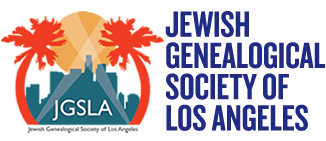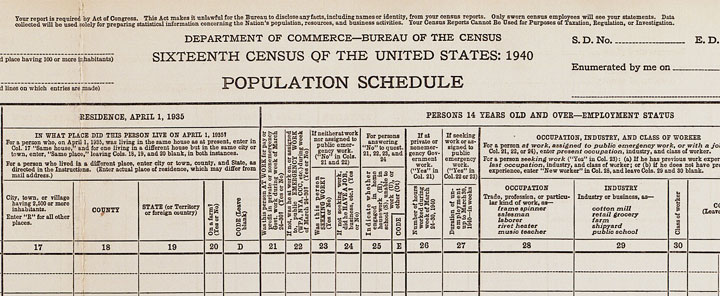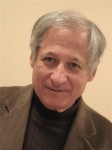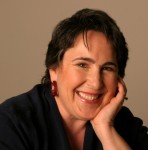UPDATE, APRIL 16, 2012: Here are the handouts that were provided at this meeting:
You won’t want to miss our next half-day program at the Los Angeles Family History Center so mark your calendars now! After a 72 year wait the 1940 U.S. Census will be available online the day after our meeting, and if you are excited by the prospect of finding “missing” relatives (or yourself!) in these images, you’ll want to learn from the master, Steve Morse, the best way to accomplish this task until the indexes come online…most likely four to seven months from now.
Sunday, April 1 ~ 1:00PM – 6:00PM
Assisted Research Day at the Family History Library
10741 Santa Monica Blvd. Los Angeles, 90025
Join us for an afternoon of mentor-guided research using the microfilms and records at the LAFHL with free access to Ancestry.com, FindMyPast (UK records) & Fold3.com. Have your documents in Yiddish, Hebrew, Polish, German and Russian translated, free of charge, by expert, professional translators. We’ll also offer three lectures (one repeated twice!) on topics to advance your research:
1:15PM – Navigating the 1940 U.S. Census – Stephen P. Morse
When the 1940 census is released on April 2 it will not have a name index. Such an index will not be available for perhaps up to six months after opening day, so finding people in the census will involve searching by location instead. The census is organized by Enumeration Districts (EDs), so the location needs to be converted to an ED before the census can be accessed. The One-Step website contains numerous tools for obtaining EDs. This talk will present the various tools and show circumstances in which each can be used. It will also demonstrate a tutorial quiz for determining the best tool to use in each specific situation.
2:45PM – Interpreting 19th Century Russian Documents – Jane Neff Rollins
Learn about what types of 19th century documents written in Cyrillic may be available to genealogists and where they may be found (either as microfilm from the Family History Library, in foreign archives, or [rarely] online). Explore the 32 characters in the Russian alphabet and find out how certain characters resemble those of English, but do not signify the same sound. Jane will show examples of how handwritten 19th century Cyrillic differs from the printed Cyrillic used today, and what standard Russian phrases are used in columnar and narrative vital records from the period. With this training, attendees will be able to identify family names on the index pages of vital records registers. They will then be able to locate and pinpoint which entry belongs to their ancestors from several that appear on each register page.
4:00PM – Navigating the 1940 U.S. Census – Stephen P. Morse (repeat of 1:15PM talk)
5:15PM – It’s Carved in Stone: Deciphering Headstones
What’s so special about Jewish tombstones, whether in Slovakia or anywhere? What was the motivation? Why does she keep at it? Why do you need a map of an entire cemetery? Find out what she and her local colleague discovered, what the difficulties were and continue to be, and what they – and you – can look for in your own research. Also see samples of the art of the engravers and imagery on tombstones. For the do-it-yourselfer, learn what methods may be helpful to decipher your own findings.
NOTE: Steve Morse’s 1940 Census talk will be repeated at 4:00PM. The first time slot will be very crowded, so consider waiting and attending at 4:00PM.
TRANSLATORS AVAILABLE:
Miriam Koral – Yiddish
Judith Springer – Polish, Russian & Hebrew
Bracha Rappaport – Hebrew (& headstone translations)
Annemarie Bestor – German & Old German Script
The appointments will be for 25 minutes. You can submit your request by email starting on Wednesday, March 21 through March 28 to pweisberger@gmail.com. Put JGSLA Translators in the subject line and indicate the language and the document(s) type, your full name and cell contact number on the request.
No specific times can be guaranteed, but your preferences will be noted. If everyone requests similar times, or we have more requests than available time slots, the choice will be done randomly and a wait-list will be established. Once the times are allotted and sent to you by March 29th, if you need to make a change, you can contact others who are scheduled to see if you can change. If you need to cancel, make sure to notify me.
Please note that very long letters with difficult handwriting are time-consuming, whereas vital records go more quickly. If you have a microfilmed record, you should arrange to have the film on the reader prior to your time slot. Providing clear, and extra enlarged-detail copies are helpful. Bring paper, or a laptop, to write down the translation as it is provided to you. Keep in mind that 25 minutes is a very short period of time when it comes to translations, but will provide you with a good start or an overall summary of a document. After that, you can arrange to continue with more detailed work on a fee basis with the translators (if you choose to do so), but that should be arranged privately. We’ll try to keep with a precise time schedule, so that means when your session is up — even in mid-translation — it must end so the next person can start on time.
THIS EVENT IS FOR MEMBERS ONLY!
REMEMBER THAT OUR EXCLUSIVE ASSISTED RESAERCH DAY IS FOR JGSLA MEMBERS ONLY, BUT YOU CAN JOIN AT THE DOOR. DO YOU HAVE A FRIEND WHO IS INTERESTED IN GETTING STARTED BUILDING A FAMILY TREE? THIS MEETING IS THE PERFECT PLACE TO EMBARK ON A FAMILY HISTORY PROJECT. INVITE THEM TO JOIN THE JGSLA AND JOIN US ON APRIL 1ST!
YOU CAN BRING YOUR FOOD TO EAT IN THE LAFHL LUNCHROOM. THEY ALSO HAVE A REFRIGERATOR AND MICROWAVE, PLUS VENDING MACHINES.
IT IS BETTER TO GIVE. PLEASE VOLUNTEER! If you can assist other members at the computers, or have expertise in different areas of research and help out in other ways, even for an hour or two, please contact pweisberger@gmail.com.
CLICK HERE FOR DIRECTIONS TO THE LOS ANGELES FAMILY HISTORY CENTER.
OUR SPEAKERS
Stephen P. Morse is the creator of the One-Step Website for which he has received both the Outstanding Contribution Award and the Lifetime Achievement Award from the International Association of Jewish Genealogical Societies, and the Award of Merit from the National Genealogical Society. He has also received the first ever Excellence Award from the Association of Professional Genealogists. In his other life Morse is a computer professional with a doctorate degree in electrical engineering. He has held various research, development, and teaching positions, authored numerous technical papers, written four textbooks, and holds four patents. He is best known as the architect of the Intel 8086 (the granddaddy of today’s Pentium processor), which sparked the PC revolution 25 years ago.
Jane Neff (original name, Kishinevsky) Rollins has been a genealogist for more than 20 years. Jane began to study Russian in high school so she could speak with her grandmother in her native tongue. She transliterated entries from the Russian business directory, Vsia Rossiia, for her ancestral towns and submitted them as a database to JewishGen more than 10 years ago. She has also searched for and transcribed 19th century Russian documents for several Jewishgen projects. When she is not genealogizing, Jane is a writer and professional speaker who specializes in health and medicine. She is a member of the Genealogical Speakers Guild and the Los Angeles Chapter of the National Speakers Association.
Madeleine Isenberg is a self-styled “Steleaglyphologist,” is a retired computer programmer and technical writer. She’s been a member of JGSLA for 20 years. In the past 8 years, in the course of her own family’s research in Spis Region of Slovakia, she extended her research to record information that only the Holocaust martyrs once knew by translating over 3000 tombstones in Hebrew from 24 cemeteries (so far!). At the same time, she collects, maintains, and cross-references vital statistics for this area to derive more complete information. She co-authored, “Jews in the Spis Region, Vol. I, Kezmarok and its Surroundings,” with Mikulas Liptak, of Slovakia, in 2007, with an updated version in 2010. She continues to be a contributor to JewishGen resources by translating from Yizkor Books, creating KehilaLinks pages, and submitting over 1000 records to JOWBR. Currently, she enjoys giving presentations such as beginning Jewish genealogy and tombstone reading (like this one); writing life histories for her own family and others; and connecting people with their ancestors.
See you on April 1st! Any questions? Contact JGSLA program chair Pamela Weisberger: pweisberger@gmail.com





